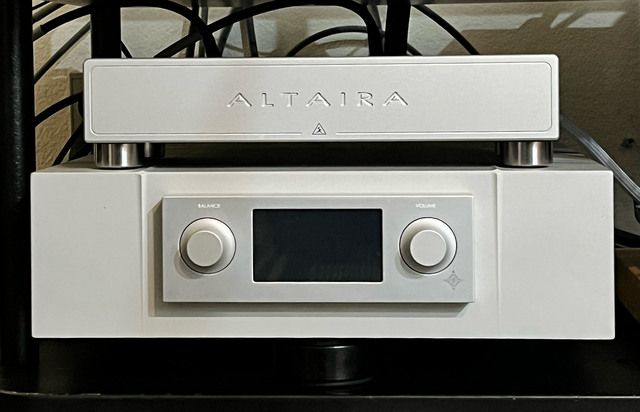- Thread Author
- #81
Damnit! You can’t un-hear the sonic benefits the Altaira make - even over the CGS capabilities of an Everest.
My order is placed.
Woot!
Sent from my iPhone using Tapatalk Pro
Damnit! You can’t un-hear the sonic benefits the Altaira make - even over the CGS capabilities of an Everest.
My order is placed.
Damnit! You can’t un-hear the sonic benefits the Altaira make - even over the CGS capabilities of an Everest.
My order is placed.
Ok, I’m going to have to try it. I hope my dealer has one I can borrow.
lol, i always look very close what you buy because i am sure you are the one to get the deepest recommendations from mike.
No more rack space, guys. La La La La [emoji86]
Sent from my iPhone using Tapatalk
No more rack space, guys. La La La La [emoji86]
Sent from my iPhone using Tapatalk
...Mine will go on top of my Esoteric or Aurender.
Esoteric make a big deal about the new floating top design of the current generation Grandioso. Sitting stuff on top of the floating top kind-a defeats the purpose of the floating top.
Haha! Thanks but Mike treats all his customers with white gloves. :lol:
No more rack space, guys. La La La La [emoji86]
Sent from my iPhone using Tapatalk


Rack space?
"We don't need no stinkin' rack space...."


hi puma, i see you got the optional footers under the altaria.
did you compare to stock?
i am a big beliver in vibration control, then again i try to understand the influence on a grounding device.
and, why is it recommended to place it on top of a device? just to safe space?
thx!
so the grounding cables can be ordered shorter than standard (1,25m)?
i remember i couldnt order a omega ethernet shortet than standard.


